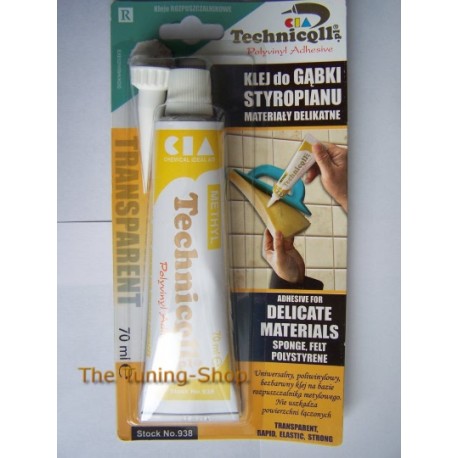No products
TECHNICQLL - DIY ACCESSORIES
-
CAR MAKES
- ACURA
-
ALFA ROMEO
- SPIDER Series 2 (1974-1982)
- 145 / 146 (1994-2000)
- 147 (2000-2010)
- 155 (1992-1997)
- 156 (1997-2007)
- 159 (2004-2011)
- 164 / 168 (1987-1998)
- 166 (1996-2007)
- 1750 GT Veloce (1967-1971)
- 33 (1983-1995)
- 75 (1985-1992)
- BRERA / SPIDER (2005-2010)
- GIULIETTA (2010-2019)
- GT (2003-2010)
- GTV / SPIDER (1995-2005)
- MiTo (2008-2018)
- SPIDER Series 4 (1990-1993)
- AUDI
-
BMW
- E114 (1966-1977)
- E21 (1975-1982)
- E24 (1975-1989)
- E28 (1981-1988)
- E30 (1982-1991)
- E32 (1986-1994)
- E34 (1988-1995)
- E36 (1991-1998)
- E38 (1995-2001)
- E39 (1995-2003)
- E46 (1999-2005)
- E60 E61 (2003-2010)
- E63 (2003-2010)
- E81 E82 E87 E88 (2004-2013)
- E90 E91 E92 E93 (2005-2013)
- K1300 GT (2009-2012)
- X1 E84 (2009-2013)
- X3 E83 (2003-2010)
- X3 F25 (2011-2016)
- X5 E53 (1999-2006)
- Z3 (1995-2002)
- Z4 E85 (2002-2008)
- CHEVROLET
- CHRYSLER
- CITROEN
- DAEWOO
- DAIHATSU
- DODGE
- DS
- EAGLE
- FIAT
- FORD
- GMC
- GREAT WALL
-
HONDA
- ACCORD
-
CIVIC
- CIVIC MK4 (1988-1991)
- CIVIC MK5 (1992-1995)
- CIVIC MK6 (1996-2000) Hatchback 3D / Coupe
- CIVIC MK6 (1996-2000) Hatchback 5D / Sedan
- CIVIC MK7 (2001-2005) EP2 / EP3 Si (USDM) Hatchback
- CIVIC MK7 (2001-2005) Sedan / Coupe
- CIVIC MK8 FK2 TYPE S (2006-2012) Hatchback
- CIVIC MK8 FN2 TYPE R (2006-2012) Hatchback
- CIVIC MK8 Si (2006-2012) Sedan / Coupe
- CIVIC MK9 (2013-onwards) Hatchback, Estate
- CR-V
- CRX
- HR-V
- INTEGRA
- JAZZ / FIT
- LEGEND
- PRELUDE
- S2000
- STREAM
- HYUNDAI
- INFINITI
- JAGUAR
- JEEP
- KIA
- LANCIA
- LAND ROVER
- LEXUS
- MAZDA
- MERCEDES-BENZ
- MERCURY
- MG
- MINI COOPER
- MITSUBISHI
- NISSAN
- PEUGEOT
- PLYMOUTH
- PONTIAC
- PORSCHE
- RENAULT
- ROVER
- SAAB
- SEAT
- SEAT BELT COVERS
- SKODA
- SMART
- SUBARU
- SUZUKI
- TECHNICQLL - DIY ACCESSORIES
- TOYOTA
- UNIVERSAL PRODUCTS
-
VAUXHALL / OPEL
- ASTRA F (1991-1997)
- ASTRA G / COUPE (1998-2005)
- ASTRA H (2005-2010)
- ASTRA J (2009-2015)
- CALIBRA (1990-1997)
- CORSA B (1993-2000)
- CORSA C (2000-2006)
- CORSA D (2006-2013)
- FRONTERA (1991-1998)
- INSIGNIA MK1 (2008-2016)
- KADETT E / ASTRA E (1984-1991)
- MERIVA A (2002-2010)
- MONARO (2001-2006)
- OMEGA A / CARLTON (1986-1994)
- OMEGA B (1994-1999)
- OMEGA C (1999-2003)
- SIGNUM (2003-2008)
- SINTRA (1997-1999)
- TIGRA A (1994-2001)
- TIGRA B TWINTOP (2004-2009)
- VECTRA A / CAVALIER (1988-1995)
- VECTRA B (1996-2002)
- VECTRA C (2002-2008)
- VIVARO (2001-2013)
- ZAFIRA A (1999-2005)
- ZAFIRA B (2005-2011)
-
VOLKSWAGEN
- AMAROK
- BEETLE
- CADDY
- CORRADO
- CRAFTER
- EOS
- FOX
- GOLF
- GOLF PLUS
- JETTA / BORA
- LUPO
- NEW BEETLE
- PASSAT
- PASSAT CC / CC
- POLO
- ROUTAN
- SCIROCCO
- SHARAN
- T2 (1967–1979) Transporter, Bus, Camper
- T3 / T25 (1979–1992) Transporter, Bus, Camper
- T4 (1990-2003) Transporter, Bus, Multivan, Eurovan
- T5 (2003-2015) Transporter, Bus, Multivan, Caravelle
- TIGUAN
- TOUAREG
- TOURAN
- VOLVO
Viewed products
-

1 x 70ml ADHESIVE GLUE...
A BRAND NEW1 x 70ml ADHESIVE GLUE FOR...
1 x 70ml ADHESIVE GLUE FOR SPONGE POLYSTYRENE PU FOAM CORK LEATHER High Quality TECHNICQLL NEW
R-938
New product
A BRAND NEW
1 x 70ml ADHESIVE GLUE FOR SPONGE, PU FOAM, FOAMED POLYSTYRENE, CORK, LEATHER etc.
HIGH QUALITY PRODUCT
50 Items
More info
A BRAND NEW
1 x 70ml ADHESIVE GLUE FOR SPONGE, PU FOAM, FOAMED POLYSTYRENE, CORK, LEATHER etc.
HIGH QUALITY PRODUCT
DESCRIPTION:
A universal colourless, fast curing adhesive made on the base of water dispersion of vinyl polyacetate and addition of modifiers. Designed first of all for bonding delicate materials such as: spange, PU foam, foamed polystyrene as well as felt, cork, leather, chamois-leather, fabries, cardboard to most building materials like: plaster, gypsum – cement plates, bricks, wood, plastic, glass and even to different kind of metals e.g. steel, aluminium. This product is offered on the market as a universal adhesive because it easy bonds to almost materials (except PP, PE, Teflon) giving a transparent joint.
HOW TO USE:
The surfaces designed for bonding must be dry, clean and degreased. Apply the adhesive to the surfaces to be bonded and spread it uniformly and leave to evaporate partly water. Make sure that at joints of bigger surfaces one of the surfaces should be penetrable to air to evaporate water. The adhesive squeezed from the tube may be uniformly spread with a spatula or piece of cardboard. Another way of gluing is joining the materials immediately after applying the adhesive to one of the surfaces and then the materials are separated and after initial drying they are jointed again. The time from applying the adhesive to gluing the materials varies from a few to 30 minutes depending on a thickness of a layer and temperature. Before joining the materials the film created from applied adhesive should be dry in touch to prevent fingers from getting dirty. This ensures instant bonding after pressing the materials without a possibility of dislocation or unsticking. The materials should be immobilized for a few hours until full curing if breaking stresses occur. Stick at temperature above 10°C.






